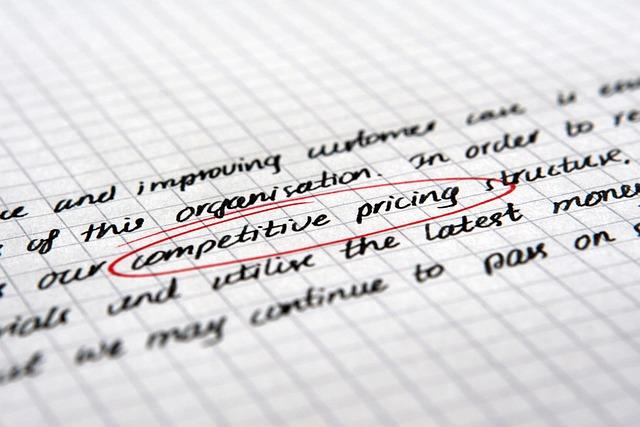How to Price Services or Goods

Selecting the right pricing strategy for your services or goods can make the difference between the success or failure of your business. If you are planning a new business, you will want to know how to price your services or goods. Your pricing structure choice will depend on your business, how other similar companies price their products and services, and what your customers want.
In this article, we look at how to price services and goods and decide on the best pricing strategy for your profit margins.
Why Does Pricing Matter?
When deciding how to price services or goods, you need to consider how you can maximize profits. This is only possible if you select a price that is appealing to your audience, and to do so, you will need to understand what drives your customers' choices.
You can research pricing strategies yourself, but if you are unsure of where to start, you could consider using some pricing software. This can be particularly useful if you have a lot of products in your store. Another option would be to seek expert advice, although this can be more costly.
Finally, you must monitor the results of your pricing choices and amend your prices accordingly.
Five Options to Choose How to Price Services/Goods
Here are five options to help you price goods/services in your business.
1. An Hourly Rate
Deciding how to price your services or goods by an hourly rate is not as easy as pricing a product. You might want to have a set rate for all clients or customize your pricing. However, customized pricing can take up your time.
To come up with an hourly rate, you should first of all consider your costs. These might be directly related to the job, like gardening supplies for a client, or indirect costs, such as equipment, maintenance, and insurance.
You can then compare how much you wish to earn with the total of your direct and indirect expenses and then divide this by the number of hours you want to work per week. Before you divide by the number of hours you wish to work on clients' services, you might want to, minus hours spent not working for clients, such as admin or marketing time.
Carefully research what your competition is charging. Disruptors are ok but, if you are priced too differently to others in your niche, you might find it challenging to attract customers to your brand. You can find out how much people are willing to pay by conducting market research, such as surveys or online questionnaires.
2. A Fixed Cost Plus a Markup
You can save time by offering fixed prices for your products and services. With a fixed cost and a markup, you consider your costs for the project, like gardening supplies for a client, and then calculate the indirect costs, like equipment, time spent on office duties, and a proportion of insurance, etc. Work out how long you will spend on the project. You can then decide on a fixed price; a markup will help increase your profit margins.
Again, you will need to conduct market research when deciding how to price your services or goods to see how much people are willing to pay for the type of project. Customers usually ask for quotes from other businesses, so ensure that your project pricing is competitive. Having a healthy markup can help you avoid problems with a lack of clients or if you underestimate your expenses.
3. A Retainer Package
A retainer package is a way to secure a regular contract for your services or products. By offering a retainer package, you provide reliability and commitment to your customers.
If you decide to set up your business as a limited liability company (LLC), you will likely need to pay a regular retainer for the services of your registered agent.
To decide on how to price services or goods as a retainer package, work out the cost incurred by the work for the client, perhaps per month, and compare this to how much you wish to earn per hour or the profit you want to make. Make sure you include all of your costs, both indirect and direct.
4. By Commission
You might wish to use a commission-based pricing strategy when choosing how to price your services or goods. This may be a pre-established commission program such as a home beauty franchise, it might be something you agree with a company that you will be selling products or services on behalf of. Alternatively, you might be offering a commission price point to secure a contract.
You will again need to make sure your costs are covered and cover times when you might not make enough commissions. You will also need to confirm legal aspects, like making sure customers are aware that you earn a commission for services sold.
5. By Value
This is one of the best ways to increase your profit margins. For this strategy, you will need to conduct market research to find out what customers perceive the value of your services or products to be. You must monitor the perceived value as it can change with time. You might also notice seasonal variations.
Pricing your products based on value can be useful for offers like buy one get one free or bulk purchases. In this case, the offer influences the perceived value of the product and makes it look more appealing to the customer.
Final Word: How to Price Services or Goods
When considering how to price services or goods there are several options. You need to make sure you cover all your costs when pricing per hour or as a fixed price and also consider the expected value placed by customers. You can also consider commission, retainers, and value as ways to price your services or products. Which method do you use? Let us know in the comments.

0 comments
Leave a comment
Please log in or register to post a comment